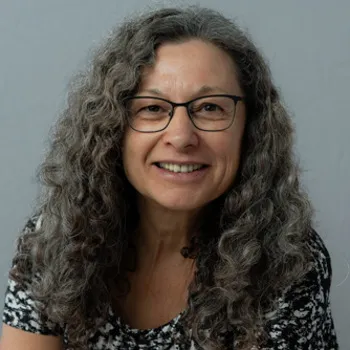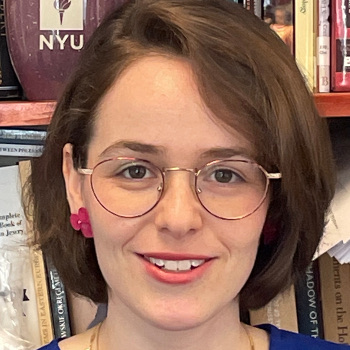In philosophy, an “existential crisis” refers to a state of questioning one’s purpose, meaning, and place in the world. This concept now reflects the state of both the humanities and computer science as these fields grapple with questions of relevance, methodology, and purpose in the era of Generative Artificial Intelligence (GenAI).
While the share of bachelor degrees awarded in the U.S. in the humanities dropped from almost 15% in 2005 to just 8.8% in 2022, according to the American Academy of Arts & Sciences, the field of computer science is now facing its own existential questions as GenAI threatens to automate core intellectual tasks. These parallel challenges present an opportunity for convergence, as artificial intelligence technologies simultaneously disrupt and potentially revitalize these seemingly disparate fields.
The reasons for the decline in the attractiveness of the humanities are multifaceted and include both external and internal factors. One major external factor is the growing emphasis on job market readiness and economic returns on education. Unlike computer science graduates, who enter a market with an abundance of high-paying positions, relatively consistent demand, and clear career progression, humanities graduates face uncertain employment prospects, lower starting salaries, and often require additional credentials in order to secure/develop stable careers. This market disparity pushes students toward STEM fields despite their possible interest in humanistic studies, creating a cycle whereby, due to low enrollment, humanities departments receive less funding and attract fewer students, and so on.
The humanities have also faced internal challenges that have reduced their appeal. In the mid-to-late 20th century, postmodernism and existentialism emerged as reactions to modernist beliefs in progress, reason, and universal truth. This philosophical shift affected various academic disciplines but with different implications. On the one hand, postmodernist skepticism co-exists alongside computer science’s ability to demonstrate progress through functional technologies; that is, even if there is skepticism about concepts like “truth” or “progress” in a philosophical sense, it is hard to deny that computer science produces results and brings practical novelties to the world, as technology is indeed advancing. On the other hand, postmodernist skepticism strikes at the core of the humanities. In fields that center precisely around questions of meaning, interpretation, and values, postmodernist critiques challenge the possibility of finding meaningful truths and, at the same time, making academic discussions more complex, less accessible to general audiences, and seemingly less relevant to practical societal needs.
As if these challenges were not enough, the emergence of GenAI now presents both fields with fundamental methodological challenges, although they manifest differently in each of the two disciplines. In the humanities, GenAI’s ability to analyze texts, generate interpretations, and produce content raises questions regarding human contribution, potentially rendering scholars’ expertise seemingly redundant. Computer science faces similar concerns about declining enrollment due to GenAI’s automation of coding processes (see, e.g., Andrew 2025), which have led to the common belief that GenAI has the potential to undermine the importance of programming fundamentals. The outcomes of this trend may create a generation of developers who are proficient at prompting rather than in understanding computational principles—similarly threatening and posing a challenge to the role of computer scientists. The key distinction, however, between computer science and the humanities lies in their respective practitioners’ relationships with the tools: computer scientists possess the technical expertise to develop and modify the very AI systems that are transforming their field, creating a symbiotic relationship rather than only a threat, while humanities scholars often remain mere users of technologies that they cannot reshape.
Nevertheless, we suggest that the challenges the two fields are undergoing following the introduction of GenAI may also have a positive effect. The integration of GenAI into both humanities and computer science curricula will not only reshape teaching and learning processes, but may also help revitalize these fields by attracting underrepresented student populations.
The Potential
Despite the threat of crisis GenAI poses, we argue that it offers opportunities to revitalize both the humanities and computer science by addressing core limitations in each field. Though vastly different in their approaches (specifically, computer science develops efficient solutions through algorithms and system optimization, while the humanities interpret human culture, history, and ideas), both fields can benefit from the abilities of AI.
For example, both computer science and the humanities rely heavily on language-intensive cognitive tasks that often create barriers to entry and slow the pace of discovery. Whether deciphering historical texts, debugging code, or performing data analysis, these tasks demand intense mental resources. GenAI alleviates this burden by automating routine aspects of these processes, for example by accelerating the translation of archival materials in the humanities and supporting code generation in computer science. This allows scholars and students in both fields to redirect their cognitive energy toward deeper intellectual exploration. By handling these linguistic and other labor-intensive tasks, GenAI liberates scholars from Sisyphean work and enables them to focus on the creative and analytical thinking that truly advances knowledge.
Could removing these barriers be the key to attracting more diverse populations to both fields? We believe this technological shift will appeal to those previously deterred by technical or linguistic requirements while maintaining their interest in the core intellectual questions and purposes of these fields. We recall that in the field of computer science, the longstanding discussion among educators on how to broaden participation, which has been going on for several decades, led to the development of environments like Alice (developed at Carnegie-Mellon University) and Scratch (developed at MIT), whose purpose was exactly this: to reduce the cognitive effort required to program in a formal programming language, allowing learners to focus on what truly matters in computer science, namely problem solving and algorithmic thinking.
Similarly, in the humanities, GenAI can address one of the most significant barriers: language proficiency. Scholars traditionally spend years mastering multiple languages in fields like classical studies and medieval and modern history before meaningful contributions become possible. Holocaust research, for example, illustrates this challenge well. The field spans archival materials in German, Polish, Russian, French, Yiddish, and Hebrew (sometimes handwritten), forcing scholars to specialize by region rather than study the Holocaust in a comprehensive manner. GenAI can assist with translating and transcribing documents, allowing historians to overcome these linguistic barriers and focus on interpretation. The democratization of both fields through GenAI can create more diverse, inclusive academic communities that will likely bring new perspectives to long-standing questions.
Perhaps most significantly, GenAI fundamentally transforms the kind of research questions that can be asked. For humanities scholars, GenAI breaks down traditional linguistic and periodization barriers that have long constrained research scopes. Scholars can now explore cultural patterns across dozens of languages and centuries, comparing literary motifs from medieval Arabic texts to modern Japanese literature or tracing philosophical concepts across Asian, African, and European traditions. This extended reach enables truly global comparative studies that were previously impossible for any single researcher. GenAI can thus expand the horizons of research beyond what any individual scholar can accomplish in a lifetime, opening up entirely new domains of inquiry.
The transformation that GenAI can bring to both computer science and the humanities constitutes what we call the AI turn—a more fundamental paradigm shift than previous methodological turns in academia. Unlike the linguistic turn that prioritized language in meaning-making or the spatial turn that reconceptualized space as an active force rather than a mere setting, the AI turn will redefine the process of knowledge creation itself. By automating core intellectual tasks, GenAI forces us to reconsider not just how research is conducted but also what constitutes a meaningful human contribution to knowledge. The AI turn, therefore, serves not merely as another methodological shift, but as a catalyst for reimagining the boundaries between disciplines, creating a new intellectual terrain where computational methods and humanistic inquiry can become partners.
It seems there is often confusion between the means and the ends of scholarship. We argue that AI may optimize how research is conducted, but efficiency alone is not the goal: intellectual discovery, deeper understanding, and meaningful contributions to knowledge remain at the heart of academic inquiry. In both fields, GenAI can serve as a powerful tool that assists throughout the entire process—helping with data collection, translation, analysis, and drafting—ultimately improving efficiency and allowing scholars to reach insights quicker. By automating repetitive or technical tasks, AI enables researchers to reclaim the essence of scholarship itself: solving complex problems and constructing meaningful explanations that advance our understanding of both technological systems and human experience.
To conclude, the emergence of GenAI presents both computer science and the humanities with significant challenges, but also with opportunities for revitalization. GenAI can liberate scholars from routine cognitive tasks, potentially democratizing access to disciplines historically limited by technical barriers. It enables new research questions that were previously impossible for individual scholars to solve and redefines core intellectual practices. This potential convergence offers a future in which technology and humanistic inquiry could coexist as complementary forces. In this collaborative future, the existential crisis facing academic disciplines could transform into an opportunity for renewed relevance.
Bibliography
Van Dam, Andrew. (2025). 1 in 4 programming jobs have vanished. what happened? The Washington Post (Online). https://www.proquest.com/blogs-podcasts-websites/1-4-programming-jobs-have-vanished-what-happened/docview/3177264580/se-2.
Netta Ehrlich is a doctoral candidate and MacCracken Fellow at the Skirball Department of Hebrew and Judaic Studies of New York University. Her research focuses on modern Jewish history in Eastern Europe.

Orit Hazzan is a professor at the Technion’s Department of Education in Science and Technology. Her research focuses on computer science, software engineering, and data science education. For additional details, see https://orithazzan.net.technion.ac.il/.

